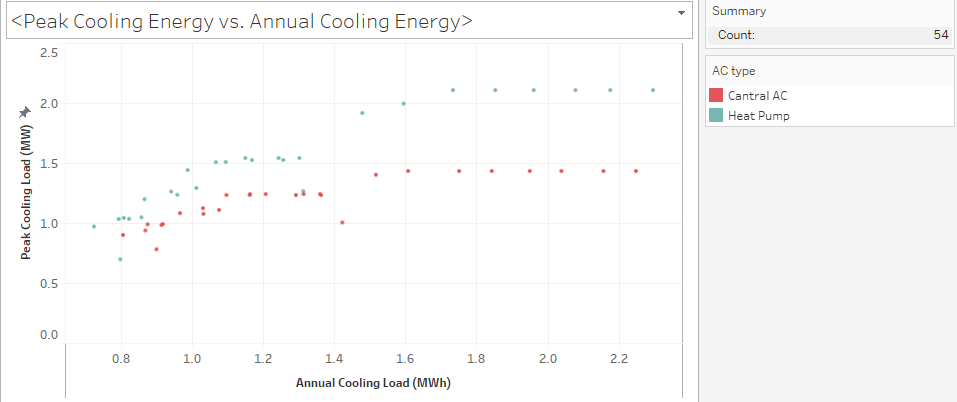Does heat pump have higher peak consumption compared to central ac system?
I modeled a single family detached unit with two different cooling systems using openstudio hpxml.
- central ac
- heat pump (same efficiency rating and capacity for both system)
I varied construction materials i.e., windows (double pane, triple pane), insulation R-values, roof colors, etc to better understand the energy use changes from each cooling system.
I also tested various weather cases (different locations, TMY, AMY, etc).
My results for MAX (Peak Load) vs. Sum (Annual Load) of hourly result of 'End Use: Electricity: Cooling' is shown below. It shows that heat pump (teal color) resulted in higher peak load than central ac (red color).
Why is that? Does higher air temperature make heat pump less efficient? I thought central ac and heat pump are the same for cooling.








@hmmmp what simulation tool are you using? Please mention it in the title or body of your post, as well as add a tag so that others can provide better help.
@hmmmp Can you share your HPXML files via e.g. Google Drive or Dropbox?
Drive
Here are two xml files one heat pump and the other for central ac. I tested with different windows, roof colors, etc.